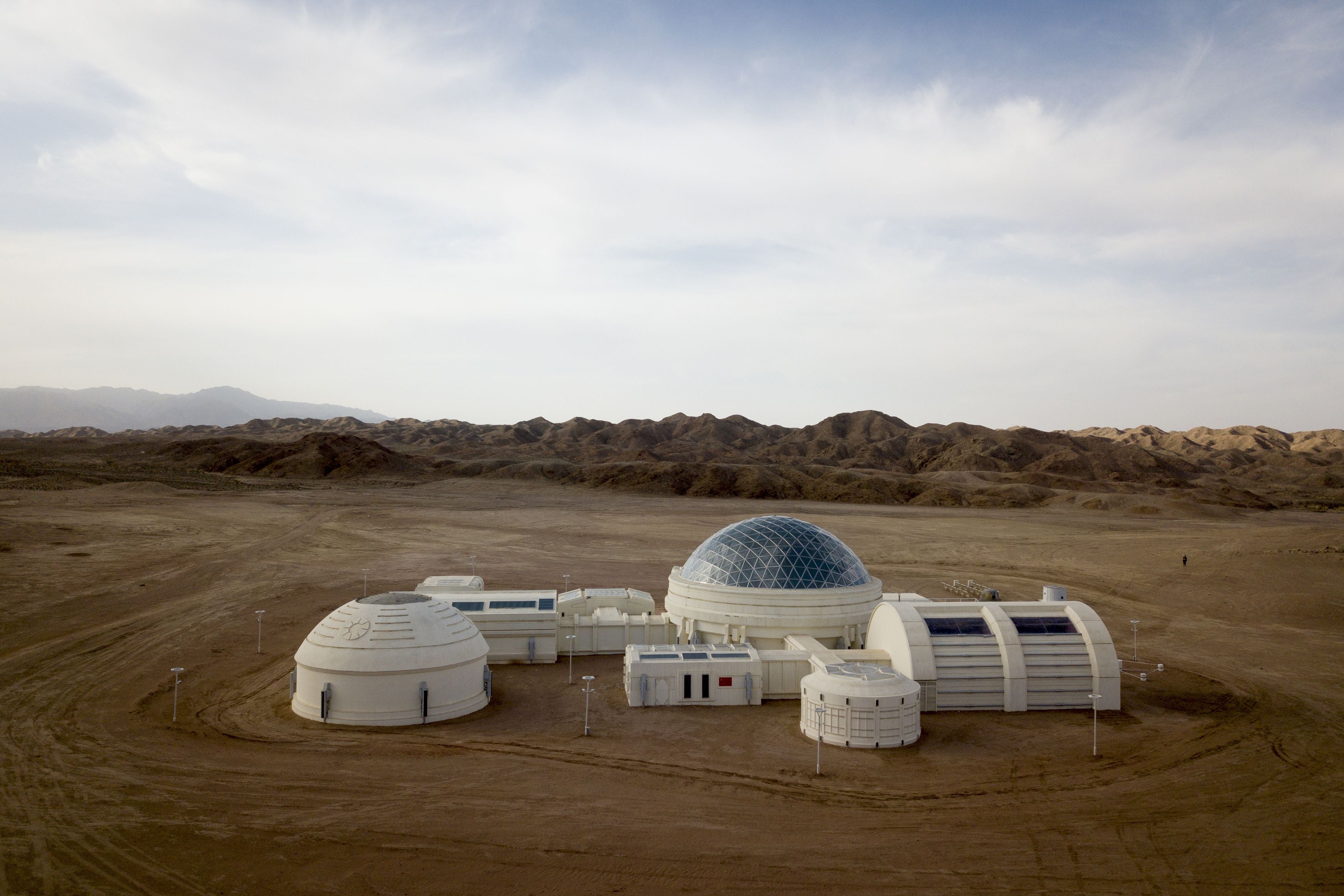Scientists consider building Mars bases with bricks made from human blood
‘The concept is literally blood-curdling,’ says one researcher

The blood, sweat and tears of astronauts can literally be used to build future colonies in Mars through a novel method, researchers say.
Transporting even a single brick to the Red Planet can be “prohibitively expensive”, as it would cost more than a million pounds, said researchers, including those from the University of Manchester in the UK.
They suggest that a concrete-like material created using extra-terrestrial dust along with astronauts’ bodily fluids be used instead.
In their study, published on Monday in the journal Materials Today Bio, scientists found that a protein from human blood, combined with a compound from urine, sweat or tears, could glue together simulated moon or Mars soil.
They said this produced a material stronger than ordinary concrete, “perfectly suited for construction work in extra-terrestrial environments”.
Citing the need for in-situ utilisation of resources (or ISRU) for constructing astronaut living quarters on Mars, researchers assessed the use of loose rock and Martian soil known as regolith and sparse water deposits.
According to the scientists, the most overlooked resource that would be available on any crewed mission to the Red Planet would be the crew themselves.
They showed in the new study that a common protein from blood plasma – human serum albumin – could act as a binder for simulated moon or Mars dust to produce a concrete-like material.
The resulting novel material – named AstroCrete by the scientists – had high strengths of 25 Megapascals (MPa), “about the same as the 20–32 MPa seen in ordinary concrete”.
Urea – a biological waste produced by the human body and excreted via urine, sweat and tears – could further increase compressive strength by over 300 per cent, the researchers said.
The use of urea and serum albumin from the crew members, the study said, can offer the best performing material, with a compressive strength of almost 40 MPa, which is “substantially stronger than ordinary concrete”.
Researchers said the new technique could offer “considerable advantages” over many other proposed construction techniques on the moon and Mars, adding that animal blood was historically used as a binder for mortar.
Analysing the underlying bonding mechanism, researchers found blood proteins denature or “curdle” to form an extended structure – known as “beta sheets” – that tightly binds the material together.
“The concept is literally blood-curdling,” remarked Aled Roberts, who is from the University of Manchester and who was involved in the project.
“Scientists have been trying to develop viable technologies to produce concrete-like materials on the surface of Mars, but we never stopped to think that the answer might be inside us all along,” Dr Roberts said.
Based on the findings, scientists estimated over 500kg of high-strength AstroCrete could be produced over the course of a two-year mission on the surface of Mars by a crew of six astronauts.
“It is exciting that a major challenge of the space age may have found its solution based on inspirations from medieval technology,” Dr Roberts said.
Join our commenting forum
Join thought-provoking conversations, follow other Independent readers and see their replies
Comments
Bookmark popover
Removed from bookmarks